On the frontlines with the Kurdish female fighters beating back ISIS
- Text by Newsha Tavakolian
- Photography by Newsha Tavakolian/Magnum Photos

A dusty pick-up truck drives along the road that passes through Serikani, leading to Al Qamishli, a once sleepy provincial town in eastern Syria. Its only cargo is an unfolded colourful scarf, casually thrown on the front seat. The truck passes by dozens of roadside billboards showing images of young female martyrs. “Without you there would be no us,” reads one.
The scarf is all that remains of Cicek Derek, one of thousands of young female fighters who stand at the forefront of the battle against the Islamic State. Cicek, only seventeen, died fighting in Kobane some months ago. With her braided hair, military fatigues and courage to take on violent Islamic militants, women like her have become heroes in the West.
But it wasn’t just the fight with the Islamic State that brought Cicek to the frontlines. Destined to become a farmer’s wife she, like many other Kurdish girls in this dirt-poor corner of Syria, was lured into battle by a powerful ideology promising not only a free Kurdistan – a region and diaspora straddling parts of Turkey, Syria, Iraq and Iran – but also gender equality and an end to the oppression of women.
Their leader is Abdullah Öcalan, head of the Kurdistan Workers’ Party (PKK), which has waged a war for Kurdish independence against Turkey since 1984, using armed forces in Iran, Iraq and Syria. And while Öcalan has been in a Turkish maximum security prison since 1999 – with the PKK labelled a terrorist organisation by some organisations and states, though notably not by the UN – thousands of his followers continue to be trained and schooled by his ideas. But what really distinguishes his principles from those of other groups in the Middle East is his carefully planned empowerment of women.

Suzdar, twenty-one, joined YPJ four years ago. “When the revolution happened in Rojava, I knew that I wanted to have a role in it.” © Newsha Tavakolian / Magnum Photos

YPJ members during daily training at their base in Serikani. © Newsha Tavakolian / Magnum Photos
It is this lure of a new life that, since 2012, has attracted an estimated 15,000 women to join two offshoots of the Kurdistan Workers’ Party – the YPJ (Women’s Defence Unit) or the YPG (People’s Defence Forces). After the 2011 revolt, when Syrians demanded freedom from Assad’s dictatorship, Kurdish groups like these took an independent stance believing that neither the opposition or the regime would reinstate their rights.
“I joined YPJ about seven months ago, because I was looking for something meaningful in my life and my leader [Öcalan] showed me the way and my role in society,” says Torin Khairegi, eighteen (pictured on this issue’s cover). “We live in a world where women are dominated by men. We are here to take control of our own future. When I am at the frontline, the thought of all the cruelty and injustice against women enrages me so much that I become extra powerful in combat.”
A group of around twenty women in green overalls, who have just gotten back from the frontline in Kobane, are playing volleyball on the top of a green hill. Most of the girls, all members of the YPJ, are either in their teens or early twenties. Their faces are fresh and youthful, but their cold-stricken hands are not those of normal teenagers.
“I killed an ISIS fighter,” says eighteen-year-old Zilan Orkesh. “At first it was difficult, but then I got used to the idea.” Zilan describes how she broke into a loud cheer after the killing, then cupped her hands around her mouth to make the sound travel to other jihadis. “I wanted to let them all know that their worst nightmare had come true: their friend had been killed by a woman.”
“The role of female fighters is much more important than the role of male fighters, because they are already free,” says Farashin Mehriva, twenty-one. “But we are fighting for the freedom of all women in the world. ISIS and many other anti-women groups want to wipe women off the Earth. But YPJ won’t allow that.”

Billboards in Qamishlou. Rojava, of martyrs who died fighting ISIS: “with you we live on and life continues”. © Newsha Tavakolian / Magnum Photos

Cicek Derek was killed at Seventeen. The only belonging brought back to her family was this scarf. Her body is still in Kobane. © Newsha Tavakolian / Magnum Photos

YPJ soldiers at A checkpoint where the identity of passengers is monitored to prevent ISIS entering. © Newsha Tavakolian / Magnum Photos
The truck carrying the scarf passes through one of several checkpoints controlled by women fighters. As soon as they notice the YPJ sign on the windshield, they allow the driver to pass without asking for his identification papers. The driver waves his hand as a sign of gratitude and keeps moving.
All the girls at Martyr Peyman’s Base – as named after deceased fighter Viyan Peyman – joined the unit shortly after a now famous uprising in 2012, the Rojava Revolution, which not only led the Kurds to take matters into their own hands but also brought Syria’s civil war to their hometowns. In January 2014, Kurdish groups, overseen by the Kurdish-run Democratic Union Party (PYD), declared autonomy over the Rojava region, abolishing the Assad government’s restrictions on women’s freedom – and cultural and religious expression – with a new constitution and grassroots democratic system.
Before joining the movement and turning into warriors, these young Kurdish fighters lived a typical rural life overshadowed by the Assad government and a masculine dominance in their communities. While the government prohibited them from having Kurdish names, or speaking Kurdish in public, at home they were told that politics “was no girl’s business”.

It was the return of the first bodies of female martyrs, killed by the Islamic State, that drew many young Kurdish girls towards Öcalan’s ideas. Watching the burial of female fighters, while sitting at home with their parents and siblings, triggered a reaction that would change their lives forever.
“When I saw Martyr Deli on TV after ISIS beheaded her, I went to her burial ceremony the next day in Amuda,” says Saria Zilan. “I saw Deli’s mother sobbing madly. Right there I swore to myself to avenge her death. I joined YPJ the day after.”
Following the Rojava uprising, thousands of Kurdish men and women enlisted in military units. The commanders who trained the new members were veterans of the Kurdistan Workers’ Party – hardened fighters and staunch ideologues that had spent years fighting the Turkish state in their main base on Mount Qandil, in the North of Iraq. Arriving in Syria they brought a radical ideology, which they publicly advertised with the aim of bringing security and stability to Rojava. Soon, their membership soared.
“The majority of the members of our society are women, but the only roles they are allowed to play are those of homemakers and mothers,” says Suzdar, twenty-one. “But in this revolution, the YPJ women make up a whole army. And this is an opportunity for us women to show that we can play a different role.”

Wounded YPJ members leave the Asayesh all-women security base in Derek. © Newsha Tavakolian / Magnum Photos

A portrait of Cicek and her mother, with Öcalan featured in the background, on the wall of Cicek’s family home. © Newsha Tavakolian / Magnum Photos

Saria Zilan, eighteen, from Amuda. “I fought with ISIS in Serikani. I captured one of them and wanted to kill him, but my comrades did not let me do so. He kept staring at the ground and would not look at me, because he said it was forbidden by his religion to look at a woman.” © Newsha Tavakolian / Magnum Photos
With the promise of gender equality – giving women the power they had been denied for hundreds of years – Öcalan’s ideas swept female citizens off their feet. The temptation of breaking free from a patriarchal society was so strong that, in a couple of years, rosy-cheeked rural girls developed into warriors so confident in their ways that they were ready to kill or be killed.
“Our women rush to fight ISIS, cheering with joy, as if they are going to a wedding party,” says Zin, a thirty-one-year-old female fighter, who had lived in Mount Qandil for years before she was transferred to an all-female security base in Derek, a town in northeastern Syria, sandwiched between Turkey and Iraq, that is today under Kurdish control. As she speaks about the attraction of Öcalan’s ideology, cigarette smoke from the ten fighters in the room gets thicker by the second. The walls covered by multiple pictures of martyrs fade beneath the fog.
Lying down next to Zin is Khamlin, a comrade who was shot in Kobane and almost lost a leg. She’s recuperating so that she can get back to fighting as soon as she can walk: “They opened fire and I got shot in my thigh. I was bleeding heavily. I told my comrades to just take my gun and leave. But they showed extreme bravery, staying with me during an intense face-to-face battle with the enemy, and captured fifteen of them. When we wanted to execute them, they were crying because they said they did not want to be killed by women, as that would keep them from entering heaven. I said to them, ‘If you were killed by a man here, at the gate of your heaven there would have been a woman, who would then kill you again and send you to hell.’ We lined all of them against a wall and shot them dead one by one.”
Every woman has her own story. “My comrades and I attacked ISIS checkpoints in Talala,” says Suzdar. “They were fighting back using all the heavy artillery they had. But we won the fight and seized the checkpoint and took the village under our own control. Before this, I thought that only my father and brother could protect me. But now as a YPJ woman, not only can I defend myself, but I can also protect others.”

YPJ members sitting in an armed vehicle in Serikani. © Newsha Tavakolian / Magnum Photos

The grave of a young female YPJ fighter killed by ISIS forces. © Newsha Tavakolian / Magnum Photos
On the rooftops of the houses in Derek town, recently washed clothes dangle on the wires. Among them there is a tiny house, where Cicek used to live. Inside the house, Cicek’s three sisters and her mother sit around her portrait. Above them on the wall, hangs a newly framed picture of Cicek and her mother with an inset of Öcalan in the background, along with her martyrdom certificate and a dead clock.
“I did not want my daughter to go to war,” explains her mother, Nasiba, who says she has mixed feelings about her daughter’s death, feeling a combination of contempt and pride. “She was only thirteen. She met a YPG member at her brother’s house and he started brainwashing her. And before we knew it, she left home and went to Mount Qandil. She was seventeen when she was killed.” She points to the colourful scarf in one corner of the room. “A couple of months ago a pick-up truck brought this from Kobane. The driver said that her body couldn’t be brought back until Kobane is under control. We still haven’t been able to bury her.”
Cicek’s older sister, Rojin, twenty, stares at the carpet as she scratches her nail polish with her fingers. “She was three years younger than me. We were always together. She was a very naïve and sensitive girl. But when, a few months ago, she came back from Qandil after four years, she was a different person. She was tough and confident. My mother told her, ‘Please don’t go back, stay with your mother.’ She answered, ‘I left to fight for all the mothers of the world. I cannot stay here.’ She kept taking pictures in every corner of the house and with all of us, as if it was the last party of her life.”
A power cut in Derek town casts a sudden darkness. The only lights to be seen are those of passing cars. Among them is an old truck that drives by slowly, carrying several megaphones that blast out revolutionary songs, which grab the attention of young boys and girls hanging around the neighbourhood idly. One by one they join the convoy that follows behind the truck. Carrying Öcalan flags, the Institute for PYD Young Revolutionaries in Derek have organised this public call for new members.
In a dark corner, away from the gathering crowd, Cicek’s sister stands with a blank stare. She’s listening to young revolutionaries chant along with the songs blasted out on the streets; songs about Kobane and martyrdom that urge survivors to rise and continue the path in which the martyrs’ blood has been shed.
At the back of the truck is a mourning caravan, devoted to the memory of the women who have become martyrs after their deaths. Long after the songs are finished, and everyone else has left, Rojin turns to leave the trailer, lost in deep thought.
Find about more about Newsha Tavakolian’s work.
This article originally appeared in Huck 54 – The Defiance Issue.
Grab it in the Huck Shop now or Subscribe today to make sure you never miss another issue.
Latest on Huck

Three decades behind the scenes of the music industry
Eddie Otchere’s ‘Spirit Behind the Lens’ is a story of music and culture that crosses and transcends borders.
Written by: Isaac Muk
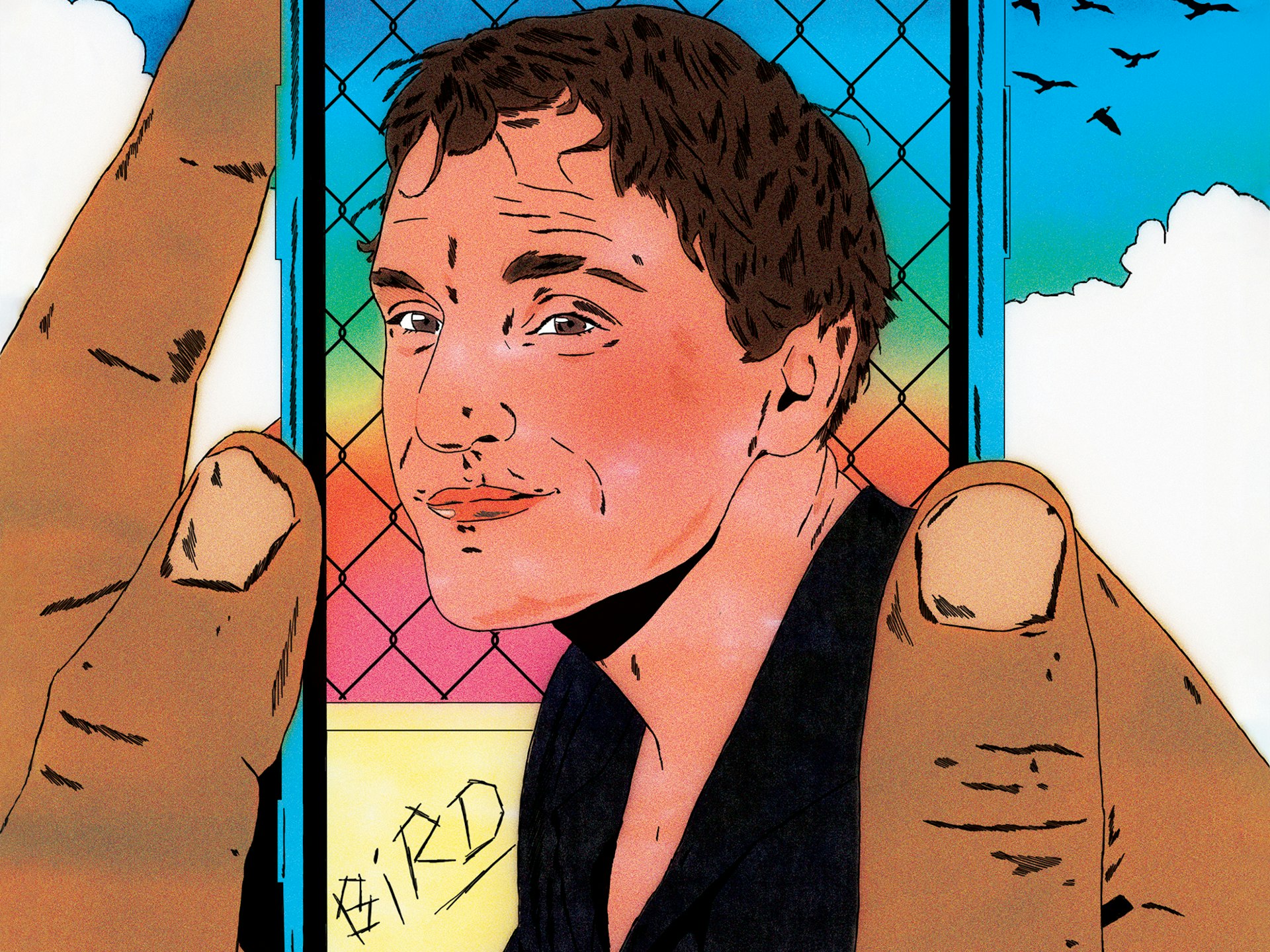
Barry Keoghan, Franz Rogowski and Andrea Arnold on ‘Bird’
The new issue of Little White Lies brings Andrea Arnold’s sixth feature to life with a thematic voyage down the Thames estuary.
Written by: Maisy Hunter
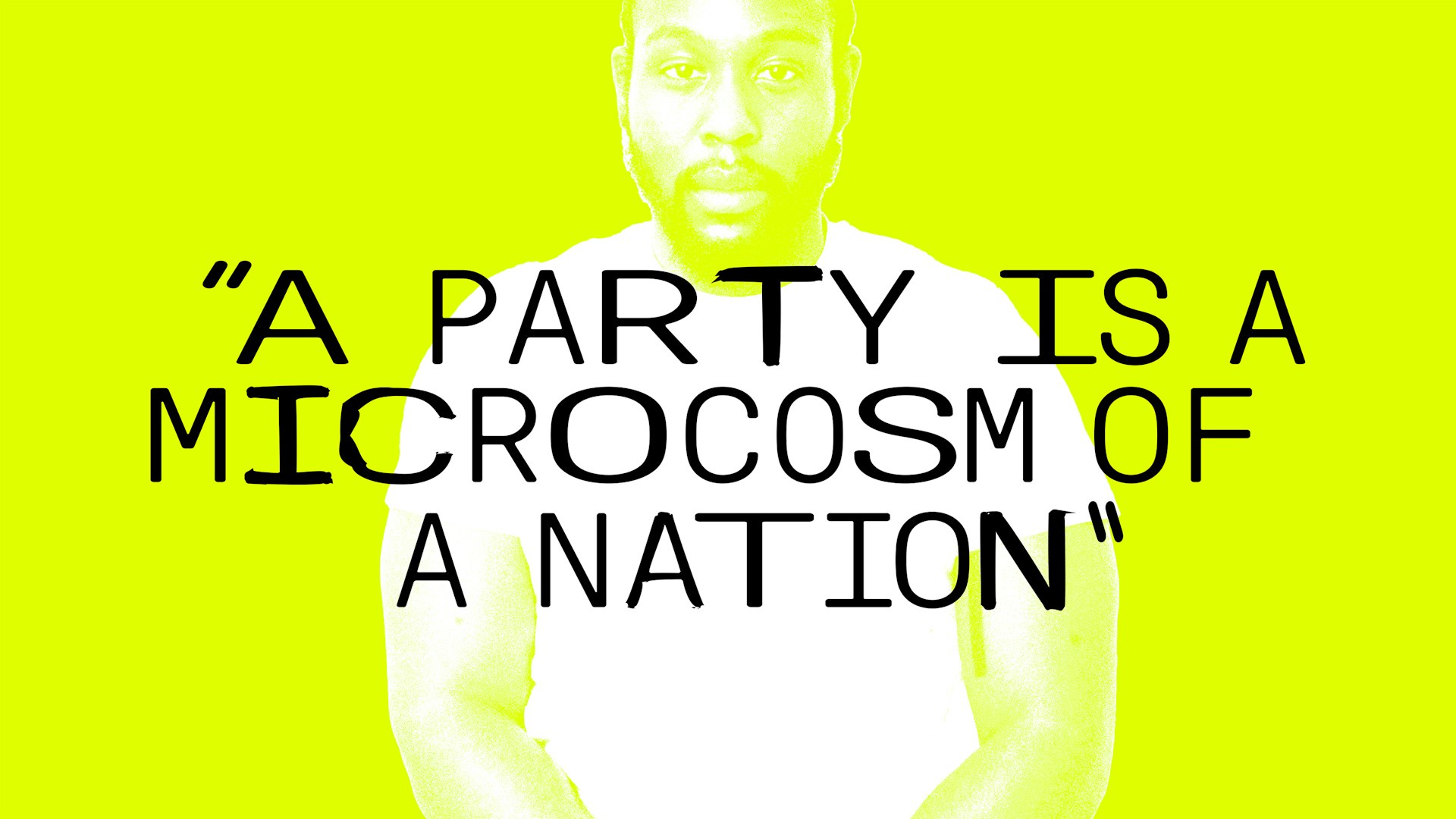
“A party is a microcosm of a nation”: Caleb Femi on the decline of the house party
To celebrate the publication of his new collection ‘The Wickedest’, Isaac Muk caught up with Femi to talk more about the work, the future of the shoobs, and discuss why having it large on a Saturday night should be cherished.
Written by: Isaac Muk
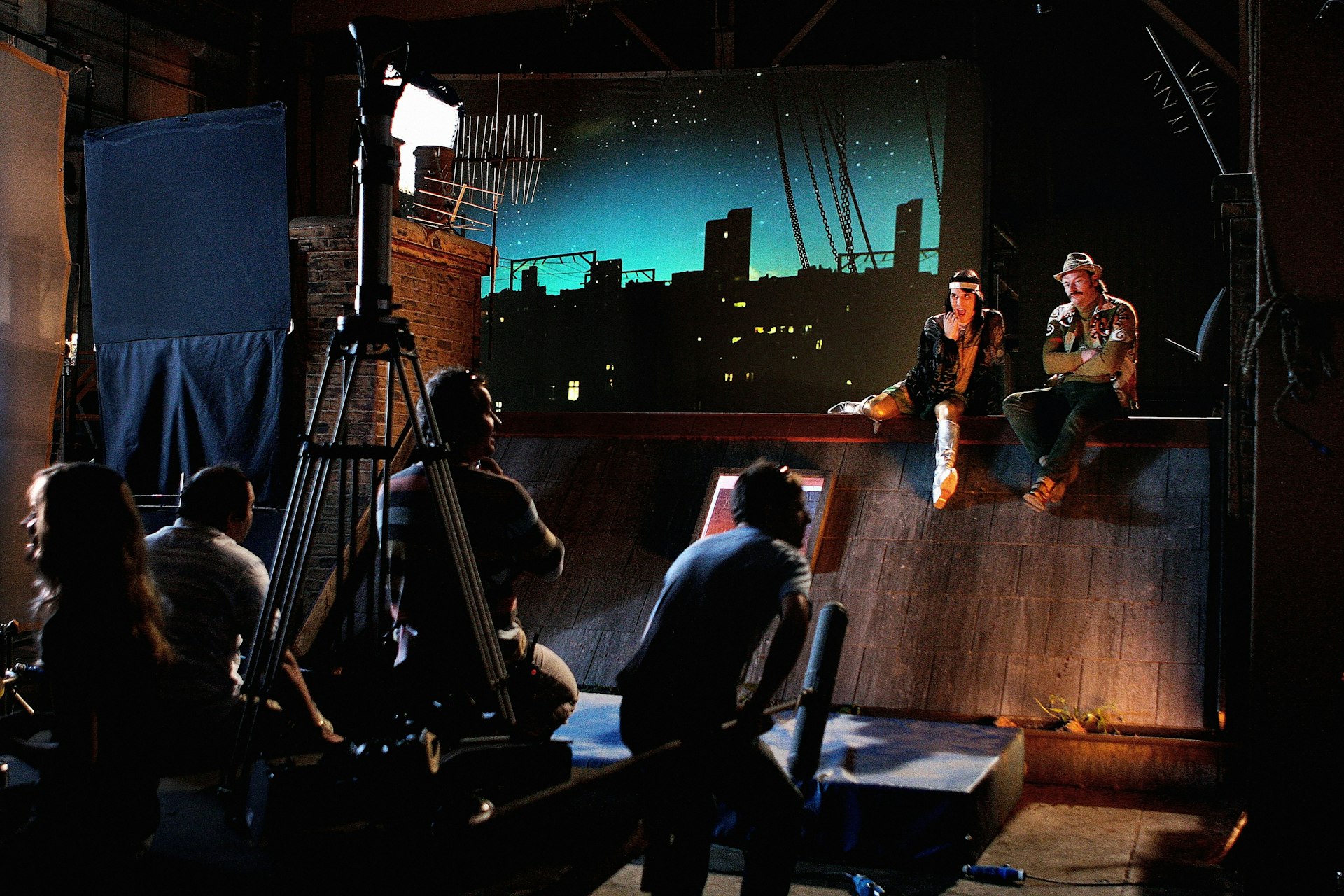
Celebrating 20 years of The Mighty Boosh
A new exhibition takes a look behind the scenes of the iconic show two decades after its BBC3 premiere.
Written by: Isaac Muk
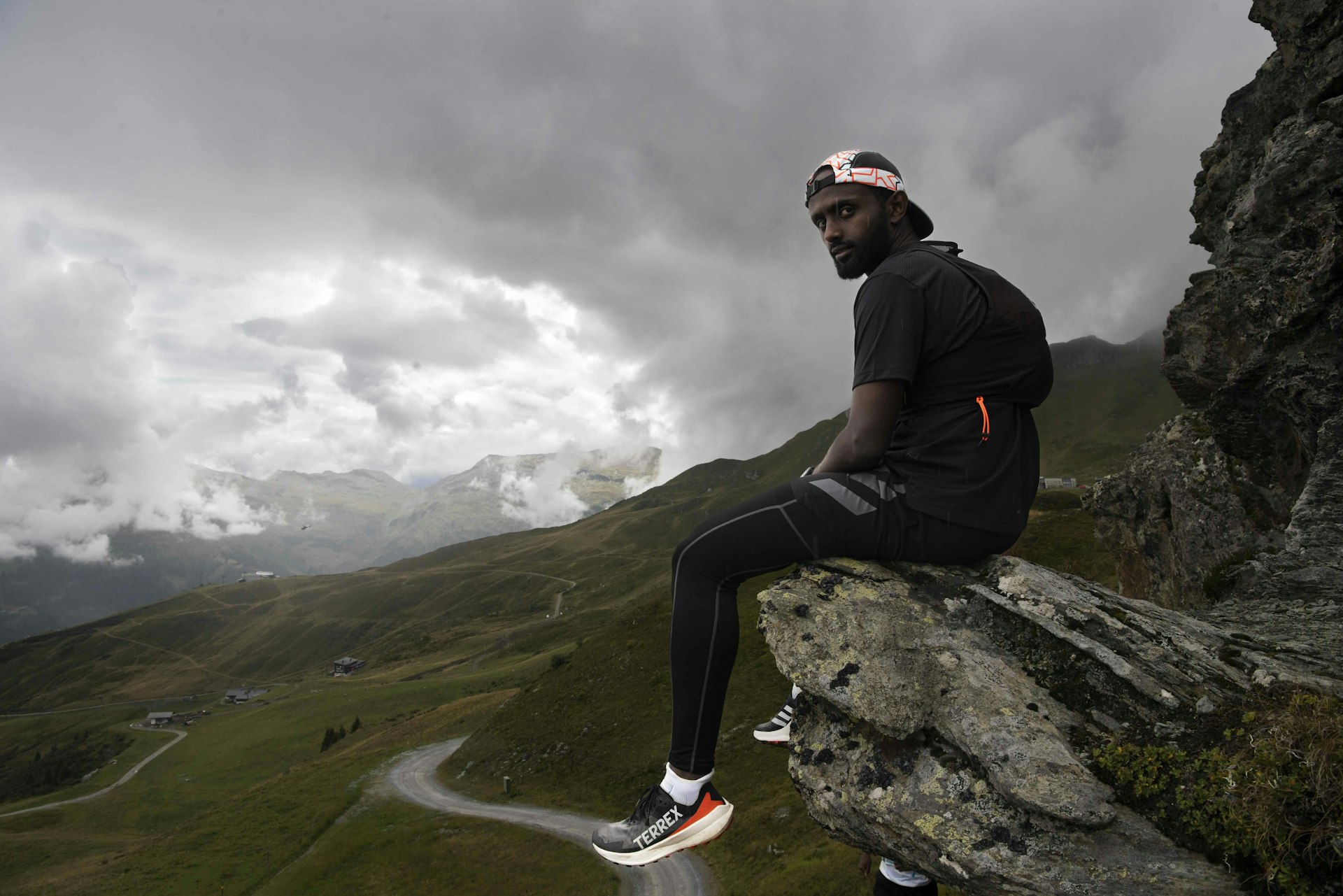
We Run Mountains: Black Trail Runners tackle Infinite Trails
Soaking up the altitude and adrenaline at Europe’s flagship trail running event, high in the Austrian Alps, with three rising British runners of colour.
Written by: Phil Young
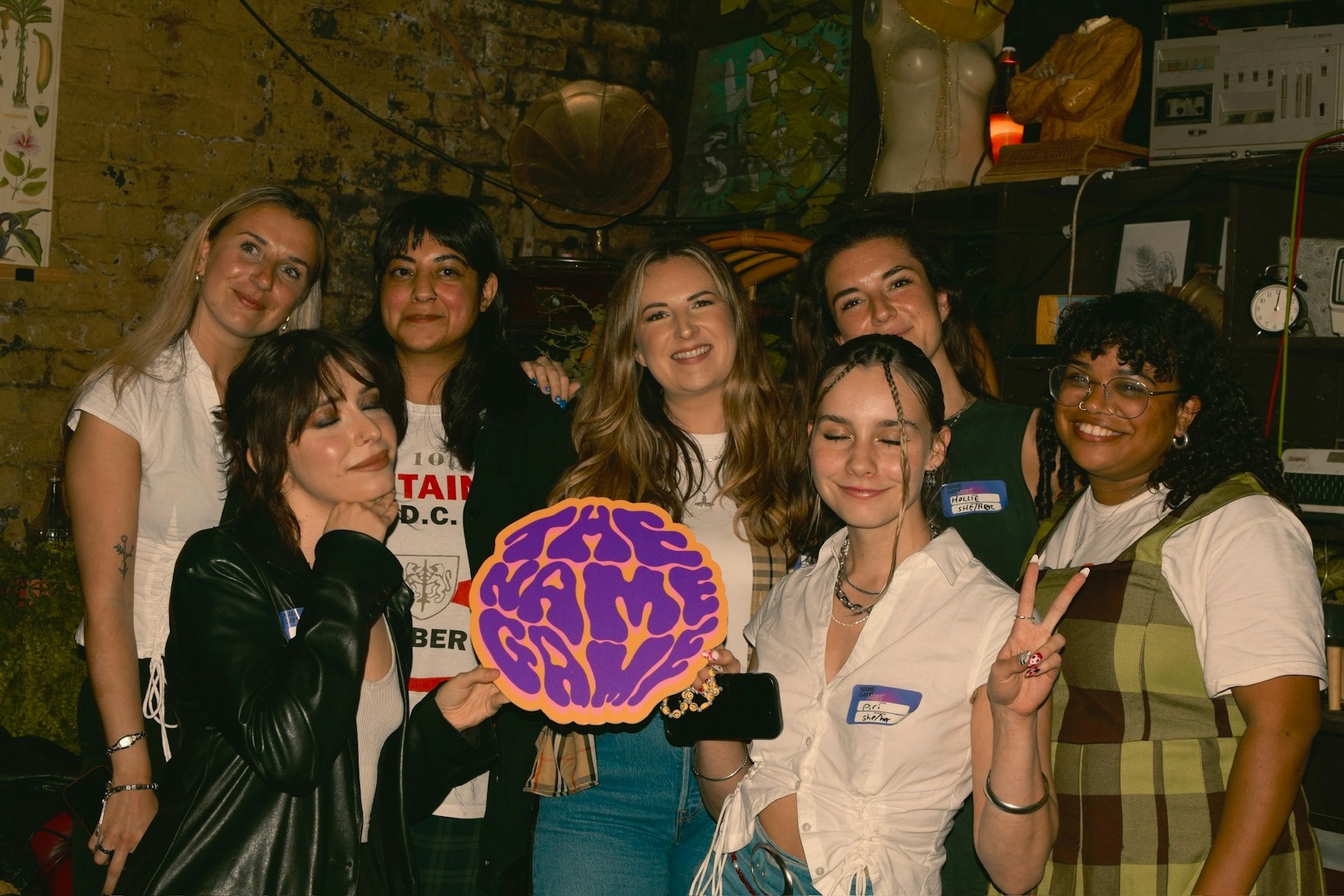
The organisation levelling the playing field in the music industry
Founded in 2022, The Name Game is committed to helping female, non-binary and trans people navigate the industry.
Written by: Djené Kaba